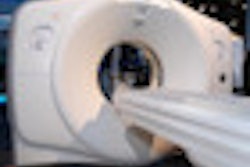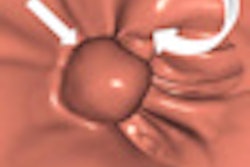Results from a lung cancer screening program in Japan suggest that implementation of low-dose chest CT screening in the community may decrease lung cancer mortality within a few years after it's introduced -- at levels comparable to those found in the National Lung Screening Trial (NLST) in the U.S., according to a study published this month in Lung Cancer.
In their 14-year analysis of lung cancer mortality in the city of Hitachi, researchers from Hitachi General Hospital found that age-specific lung cancer mortality rates in the community were far lower in 2004-2009, after screening was in place, compared to prescreening levels measured between 1995 and 2004. For men and women ages 50 to 79, lung cancer mortality fell by 24%, the research team wrote (Lung Cancer, October 12, 2012).
"Among residents of Hitachi City, a significant reduction of lung cancer mortality was observed during 2005-2009, which corresponds to four to eight years after introduction of chest CT screening in both facilities," wrote Dr. Takeshi Nawa and colleagues. "The timing of reduction in lung cancer mortality observed in the present study agrees well with that in the New York State [National Lung Screening Trial] cohort, in which the two rounds of screening provided a mortality reduction starting in the sixth to eighth years after enrollment."
Community-based screening
Japan pioneered the practice of community-based lung cancer screening of smokers with CT, the study team wrote. However, data on its effectiveness in the country remain sparse, and more studies are needed to determine the effectiveness of CT screening in cutting lung cancer mortality.
Evidence from the program suggests that it is effective: A follow-up survey of 210 lung cancer patients, 85% of whom were detected with stage IA cancer, found five-year survival of more than 90%. As of 2006, almost 30% of Hitachi citizens ages 50 to 69 had been screened for lung cancer.
The screening program at Hitachi Health Care Center began in 1998, and the program at Hitachi Medical Center began in 2001. Hitachi Medical Center has screened 31,739 participants (mean age, 57 years) with chest CT scans at least once, for a total of 83,342 screenings. In all, an estimated 36% of Hitachi residents ages 50 to 79 had undergone CT screening by March 2009. A total of 14,661 were current or past smokers, but 54% reported never having smoked a cigarette, explained Nawa, Dr. Tohru Nakagawa, Dr. Tetsuya Mizoue, and colleagues.
The study team first examined the trend and incidence of lung cancer mortality, using Ibaraki Cancer Registry data by sex and five-year age group for both Hitachi and the Ibaraki prefecture, in which the city is located, each year from 1995 to 2009, including lung cancer incidence data from 1995 to 2007.
The timeline was divided into three five-year periods (1995-1999, 2000-2004, and 2005-2009), representing the initiation of screening, early implementation, and later implementation. Lung cancer mortality in Hitachi was compared with that of Japan overall. The expected number of lung cancer deaths was determined by multiplying the number of residents in the city by the lung cancer mortality rate in Japan. Finally, the standardized mortality ratio (SMR) was calculated as the number of deaths divided by the expected number of deaths and its 95% confidence interval based on its distribution by sex and 10-year age group.
Fewer deaths at all age groups over time
In both men and women ages 60 and older, lung cancer mortality was lower from 2005-2009 compared to 1995-2004, the group reported. In the 50- to 79-year age group, the standardized mortality ratio was roughly the same during the introductory period and early implementation; however, by the final five years (2005-2009), the rate was significantly lower, with a standardized mortality ratio of 0.76 (0.67-0.86).
Lung cancer mortality by age, sex, race, and time period
|
The study team found similar results in the Ibaraki prefecture. However, the age-standardized incidence rate of lung cancer in Hitachi appeared to increase after the introduction of CT screening in the Hitachi Health Care Center in 1998 and Hitachi Medical Center in 2001. All three age groups combined showed a statistically significant decrease in standardized mortality ratios during the third period of 2005-2009 in both men (24%) and women (26%). During the last five-year period, lung cancer decreased significantly for men in their 60s (32%), men in their 70s (24%), and women in their 70s (33%). Women in their 60s showed a nonsignifcant (25%) decrease in cancer mortality during the last five years.
Before screening was initiated in 1995-1999, lung cancer mortality in the Hitachi area was comparable to both national and prefectural levels, according to the authors.
"We found a significant reduction in lung cancer mortality among target age groups four to eight years after introduction of CT screening," they wrote.
NLST results
The NLST (New England Journal of Medicine, August 4, 2011, Vol. 365:5, pp. 395-409) compared a cohort of smokers with two unscreened cohorts, with adjustments for age and smoking history. Researchers found a significant reduction in death from lung cancer: 36% in the CPS-II cohort and 64% for the CARET cohort (click here for AuntMinnie.com's coverage).
It's unclear from the results whether screening can reduce smoking deaths among nonsmokers, Nawa and colleagues wrote. However, considering that more than half of study participants were nonsmokers and 60% of the screen-detected cancers were found in nonsmokers, "it may be reasonable to infer that observed reduction in lung cancer mortality among Hitachi residents may be due, at least in part, to the effect of CT screening on lung cancer mortality among nonsmokers," the group wrote.
A strong drop in lung cancer among women during the third time period, most of whom were nonsmokers, reinforces this evidence, and an ongoing study in Japan is finding similar results in nonsmokers.
As for limitations, the community data on which the results were based are "more likely to suffer from bias compared to cohort or randomized control trials," they wrote. Therefore, an underlying decreasing trend in lung cancer mortality, very likely due to a decrease in smoking, could be due to factors other than CT screening.
However, cardiac disease didn't fall between 2005 and 2009, which would work against the argument of smoking cessation as a cause of less cancer. In addition, lung cancer incidence increased after screening was initiated.
"To enhance the benefit of CT screening and minimize its harm, future studies should be designed to address issues including clinical workup of in-determined nodules, cost-effectiveness, and integration of smoking cessation practices," Nawa and colleagues wrote.



















